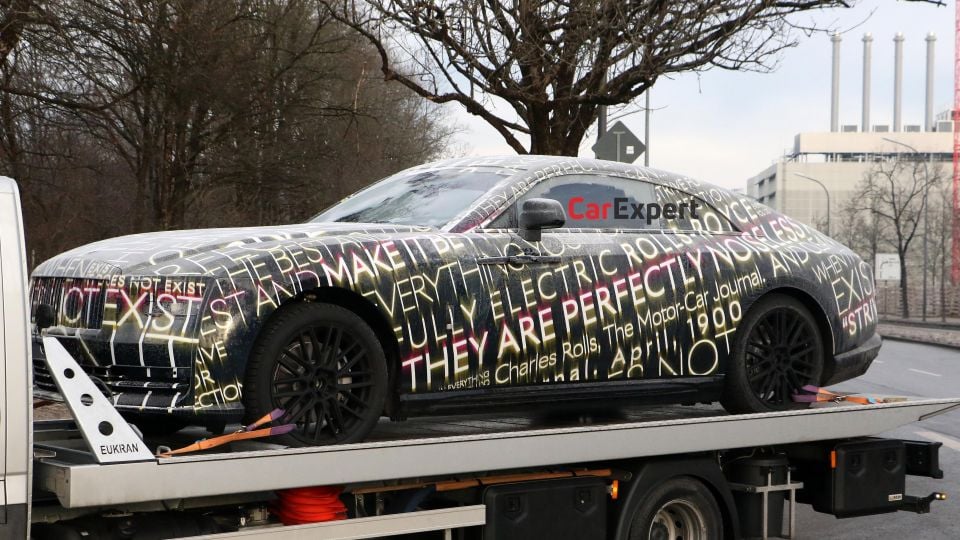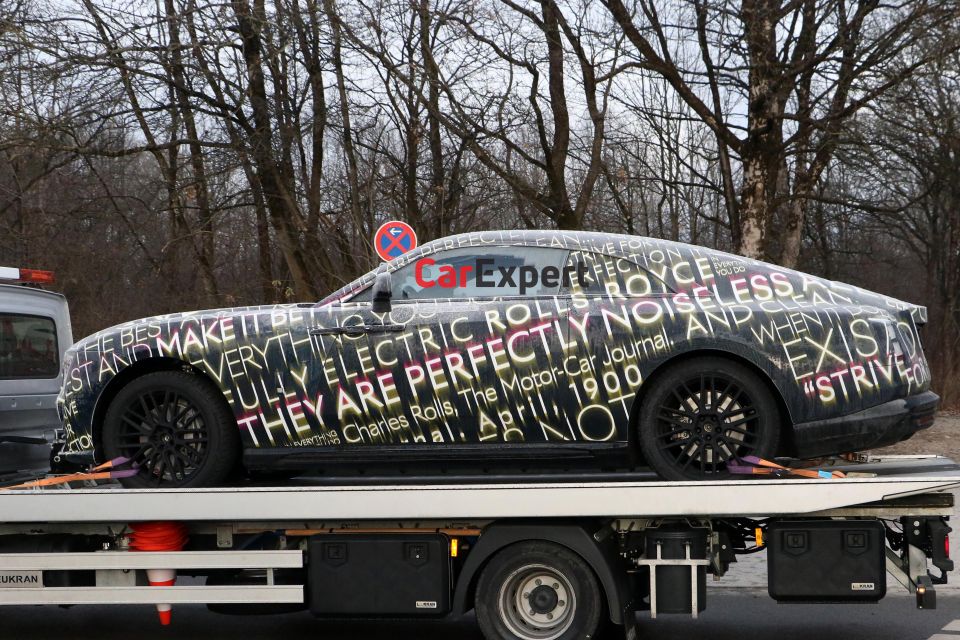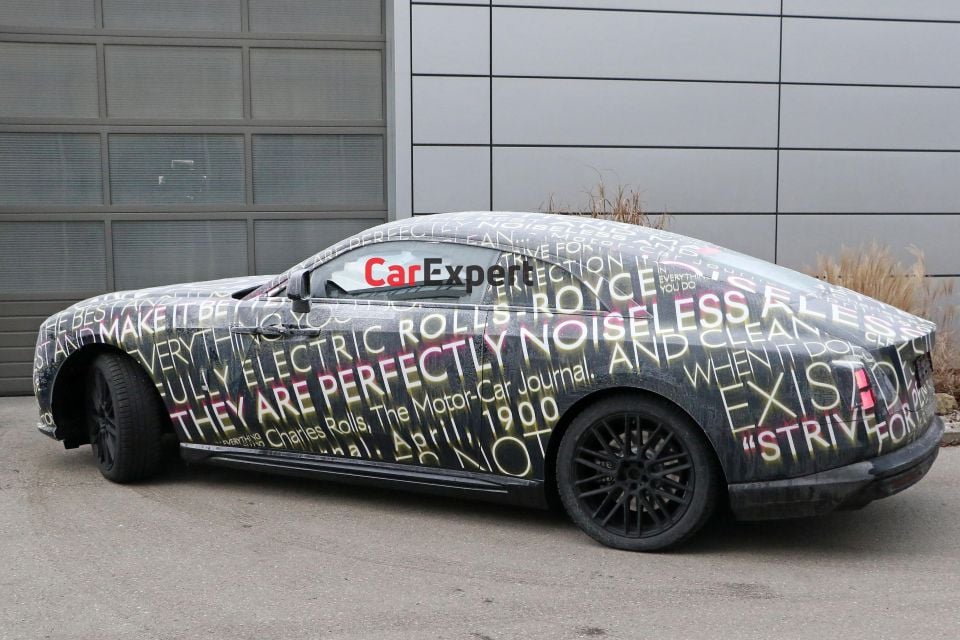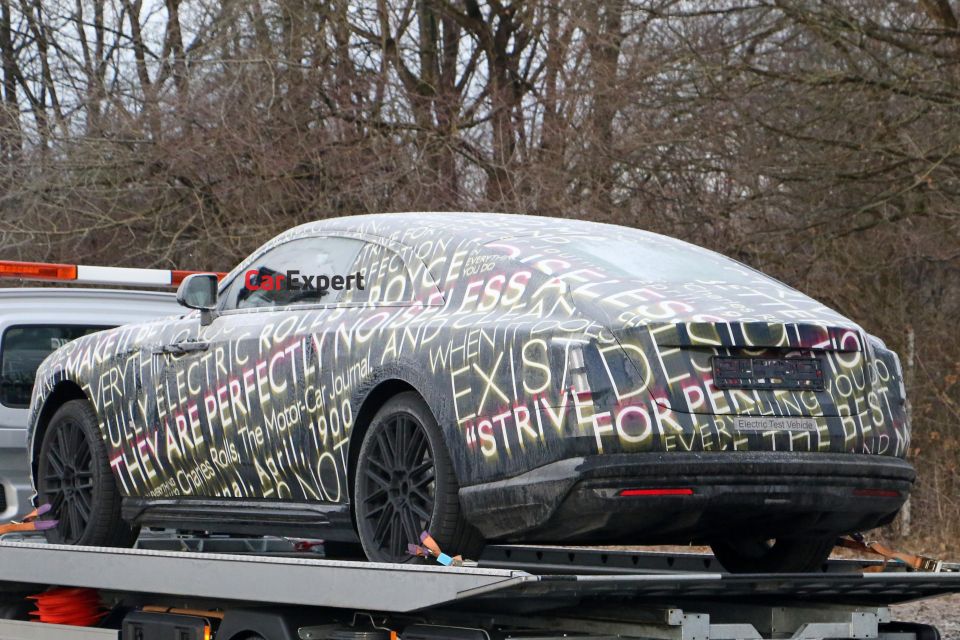

Max Davies
How Audi, BMW, Honda, Mercedes-Benz, and Suzuki started out in Australia, and where they are now
4 Hours Ago
Rolls-Royce's electric future begins with the graceful Spectre coupe, which will glide into showrooms in 2023.

News Editor


News Editor
Rolls-Royce’s first electric vehicle has been spied testing, but it’s not as though the company is trying to be discreet.
The 2023 Rolls-Royce Spectre prototypes are wrapped in camouflage bearing a quote from company co-founder Charles Rolls, uttered in 1900, as the luxury brand promises to test them in plain sight.
The Spectre also features unmistakable Rolls-Royce design cues like a bluff front end with an imposing grille – yes, an actual grille on an electric vehicle – and a stately fastback silhouette à la the Wraith coupe.
There are also Rolls’ traditional coach doors.
Deliveries of the electric coupe will begin in the fourth quarter of 2023.

The headlights and tail lights remain heavily camouflaged. The former may resemble those of the redesigned Ghost, or they could feature a split-level arrangement.
After spending more than a century trying to make its petrol cars quieter and more relaxed than anything else on the road, Rolls-Royce will be fully electric by 2030.
Under the skin, the Spectre will be built on a variation of the aluminium Architecture of Luxury that underpins the Rolls-Royce Phantom, Cullinan, and Ghost.
Although it’s owned by the BMW Group, Rolls-Royce says its architecture isn’t a variation of the CLAR used beneath everything from the BMW 3 Series to the iX electric four-wheel drive.

The German-owned British luxury brand has confirmed it’s skipping hybrids entirely, unlike fellow German-owned Brit Bentley.
Bentley will debut its first EV in 2025 and go entirely electric by 2030, but in the meantime is rolling out plug-in hybrid versions of its existing range.
To save you trying to read the camouflage, here’s what Charles Rolls, co-founder of the original Rolls-Royce Limited company, had to say about EVs in April 1900 in an interview with The Motor-Car Journal:
“The electric car is perfectly noiseless and clean. There is no smell or vibration, and they should become very useful when fixed charging stations can be arranged,”

“But for now, I do not anticipate that they will be very serviceable – at least for many years to come.”
Mr Rolls at the time installed a battery-charging station at his car showroom for the private and rental electric Broughams popular during the era.
In the early days of the car, internal combustion engine-powered vehicles competed against steam-powered and electric vehicles, though ultimately the broader industry coalesced around the ICE.
Now, brands are announcing a shift to pure-EV lineups in the near future, and Mr Rolls’ remarks are proving rather prescient.

After decades of purely petrol power, Rolls-Royce explored EVs in 2011 with the Phantom Experimental Electric (aka 102EX), a fully operational, road-legal prototype of an electric Phantom albeit one not intended for production.
Based on the contemporary Phantom, the 102EX had a pair of electric motors on the rear axle making a total of 290kW and 800Nm.
Its 0-60mph (0-97km/h) time was said to be under eight seconds, considerably slower than the V12 Phantom’s 5.7s sprint.
Its biggest downside — and reportedly the reason development was stopped — was its range, at just 200km.
Rolls-Royce then debuted the Vision Next 100 (aka 103EX) concept car in 2016, again an experimental car powered by an electric drivetrain albeit with a unique platform and autonomous driving technology.
Where expert car reviews meet expert car buying – CarExpert gives you trusted advice, personalised service and real savings on your next new car.
William Stopford is an automotive journalist with a passion for mainstream cars, automotive history and overseas auto markets.


Max Davies
4 Hours Ago


William Stopford
4 Hours Ago


Derek Fung
5 Hours Ago


Max Davies
12 Hours Ago


William Stopford
1 Day Ago


Ben Zachariah
1 Day Ago